Motorcycle helmets don’t come with a specific expiry date.
But that doesn’t mean the helmets last forever.
Many riders won’t change their helmets until it gets cracked or damaged.
That’s not the way. You should be changing it.
So do motorcycle helmets expire and when should you replace a motorcycle helmet?
Motorcycle helmets don’t have a specific expiry date. But as a general rule, motorcycle helmets should be replaced every 5 years.
The helmet over time faces wear and tear. Accumulates moisture, sweat, and oil. And gets technologically obsolete when compared to the new helmets.

There are arguments against this replacement thumb rule.
Mainly around helmets not having an expiry date. And the polystyrene used as the shock absorber in helmets is non-biodegradable.
To understand the nuances more, let’s get down to the nitty-gritty.
When to replace a motorcycle helmet?
A good thumb rule is to change the motorcycle helmet every 5 years.
It’s a thumb rule.
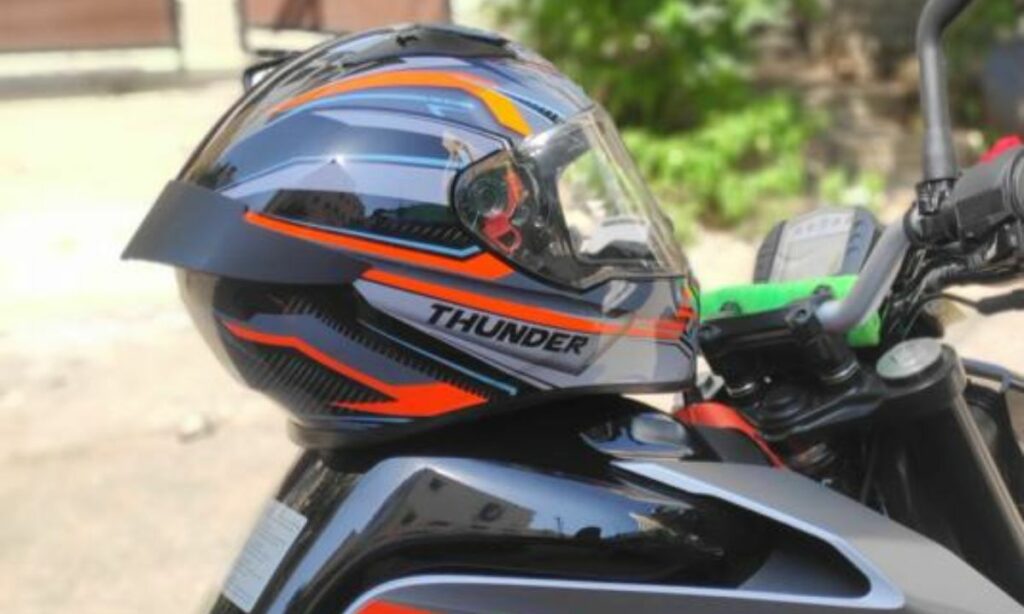
There is no one stopping you from using your sturdy, well-maintained helmet from using it for one or two years more.
Similarly, if the helmet is in bad condition, worn out, or has cracks – then you better change it soon. And don’t wait for it to hit the 5-year mark.
But in general, replacing your motorcycle helmet every 5 years is a sound approach.
The resins, glues, polystyrene, and other liner materials used to manufacture helmets will not be the same after 5 years of their manufacturing date.
Do motorcycle helmets expire?
Motorcycle helmets do not have an expiry date mentioned on them.
This might surprise a few of you.
But it is what it is.
You can check for any expiry date labels on your helmet.

All you will find is the helmet brand name and the DOT certification label.
If helmets indeed had an expiry date, helmet manufacturers are supposed to mention them.
However:
Just because helmets don’t have an expiry date, doesn’t mean you shouldn’t change them.
It’s like any other gadget. Smartphones. Laptops. Household appliances. They don’t have expiry dates. But we do change them every few years.
Reasons to change a helmet
Here are the main reasons why you should change the helmet after 5 years or so:
#1. Wear and tear
Over a period of time, your helmet starts to wear out.
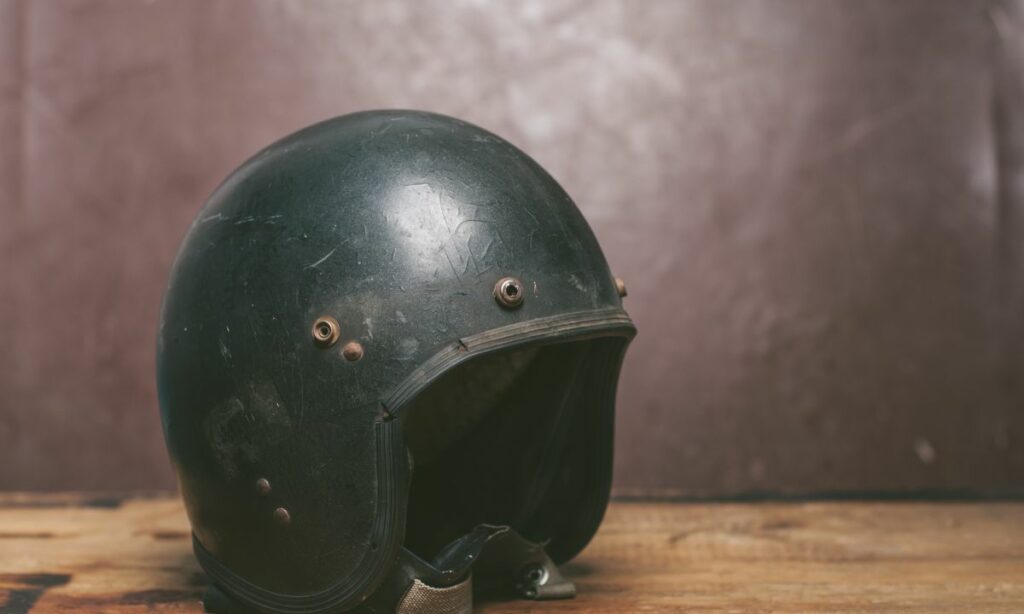
It can be in the form of:
- scratches
- tears and cracks
- bolts loosening
- sometimes outright damages
Sustaining such wear for a long time will bog down the helmet’s performance.
No amount of helmet painting can compensate for high wear and tear.
Especially if there are any cracks or damages
#2. Moisture, sweat, and oil accumulation
Best helmets come with reusable comfort liners.
You can take out the fabric, clean it, and put it back.
Or just replace the comfort liner.
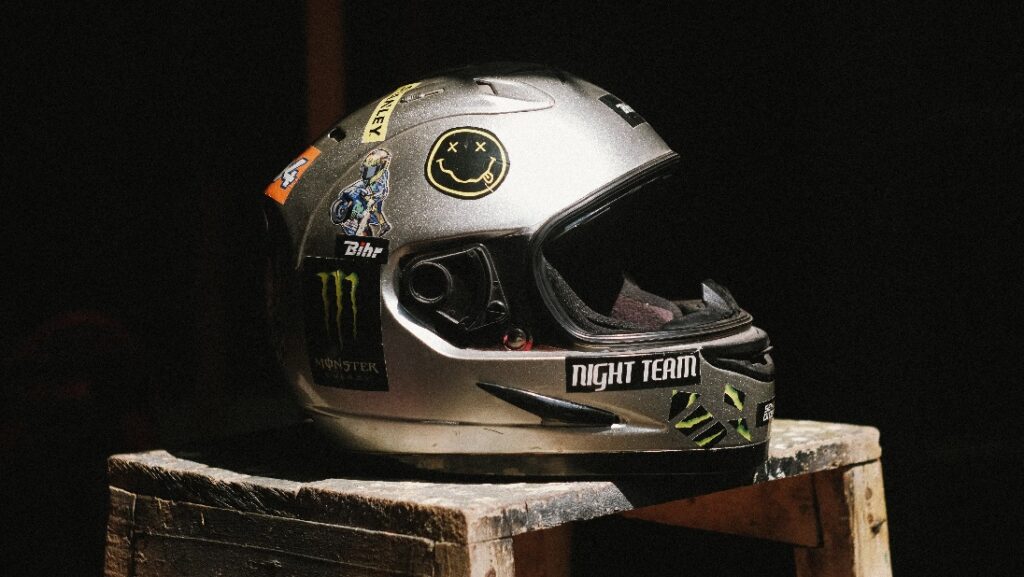
But, most helmets do not have that option.
Years of oil and sweat accumulated will start showing signs. Even if you wash them periodically.
If your helmet is smelling despite many cleaning efforts, it’s time to replace it.
#3. Technology obsolescence
This is the most important aspect.
As the years progress, safety measures in the helmets see technological improvements.
The materials used might change. The reinforcements to prevent cracks might improve. New functionalities might get added.
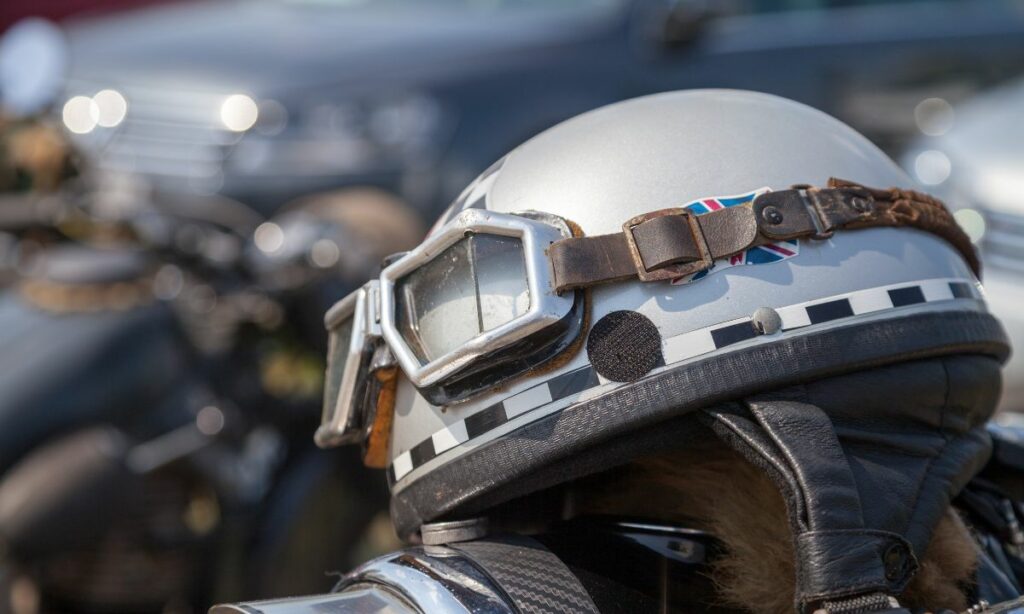
If you are still using a decade-old helmet, no matter the performance, the helmet quality will always be subpar when compared to the newer versions.
Hence, to keep up with the safety standards, you need to replace your helmet every 5 to 7 years.
Reasons to NOT change a helmet
Despite the valid reasons to replace a motorcycle helmet, there are strong arguments against replacing it periodically.
Here are the arguments:
#1. No expiry date
There is no expiry date mentioned in a sticker or a label on the helmets.
if there was an expiry date, the manufacturer is obligated to include a sticker or a warning label that goes something like, “Do Not Use This Helmet After 10 NOV 2027”. Or even a simple, “Exp Date: 10 Nov 2027”.

The manufacturers have not given any sort of expiration date to the helmet.
If there indeed is an expiration date, no manufacturer would risk such a liability.
#2. Helmet shock-absorbing material does NOT degrade
The inner lining of the helmet is the most important part. It absorbs the impact of a collision a rider can face.
The inner liner protects your head from any potential damage by reducing the rate of impact through its shock-absorbing material.
And the most commonly used material for inner lining is Expanded Polystyrene (EPS) commonly known as thermocol.
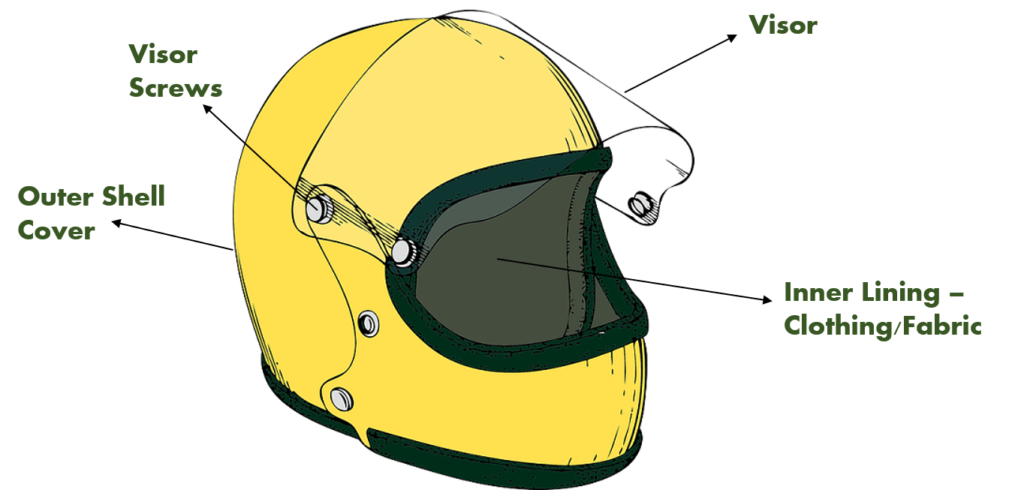
One of the reasons given to replace the helmet is – the absorbing material (polystyrene) degrades.
But here is the thing:
Polystyrene is non-biodegradable. It takes centuries for the material to degrade.
Not 5-7 years.
Bottomline
I am a believer of 5-year thumb rule.
But that does not mean you should be too.
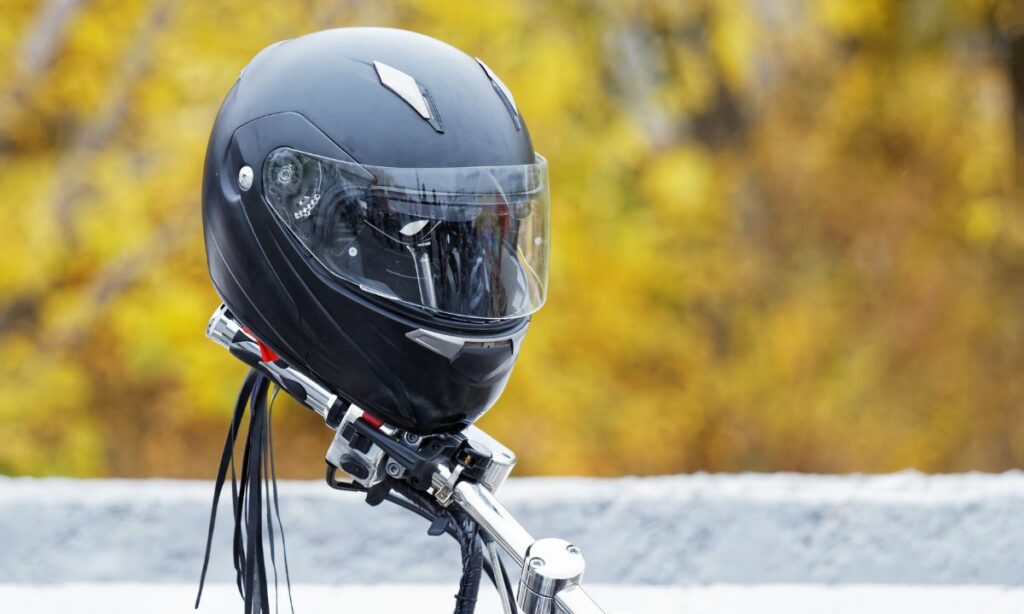
If your helmet is in excellent condition even after 6 years and you feel there is no need for replacement, absolutely fine.
At the same time, if your helmet is 2 years old and already has cracks, bolts loosen consistently and the comfort liner smells bad, and you want to replace that’s fine too.
A 5 to 7-year replacement for motorcycle helmets works the best IMO.
FAQs
Is 5-year thumb rule – a marketing gimmick?
There are many doubters for this 5-year helmet replacement rule.
First, there is no strong scientific evidence, experimental or empirical, that helmets degrade or slow down their performance after 5 years.
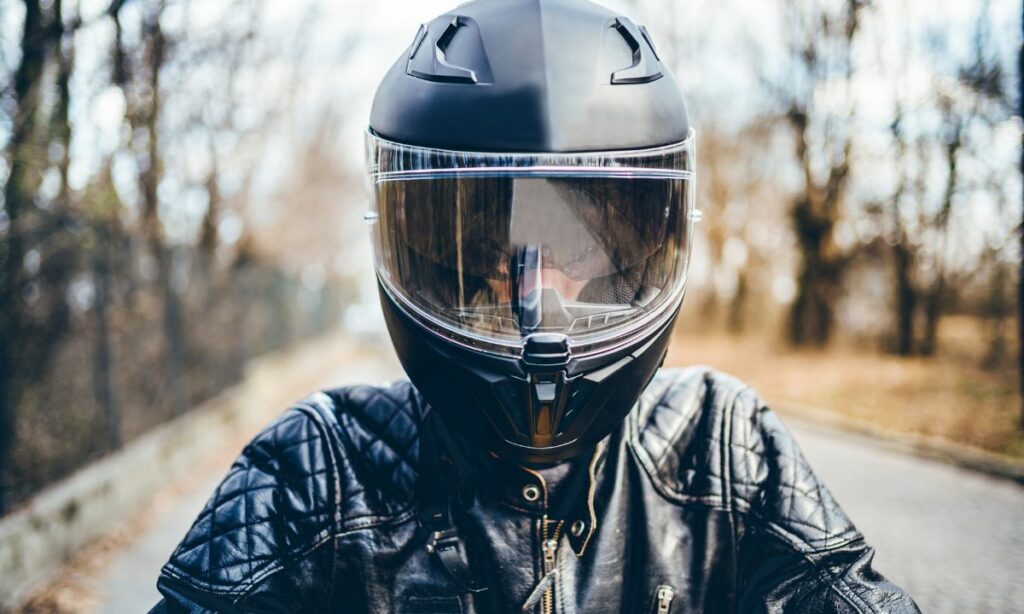
Second, there is no expiry date sticker or label on the helmet.
As a result, many believe the replacement thumb rule is just manufacturers wanting people to buy their helmets more and more.
What are the constituents of a helmet?
The three main constituents of a helmet include:
- Outer Shell covering
- Inner layer
- Cloth/Fabric Liner or Comfort Liner
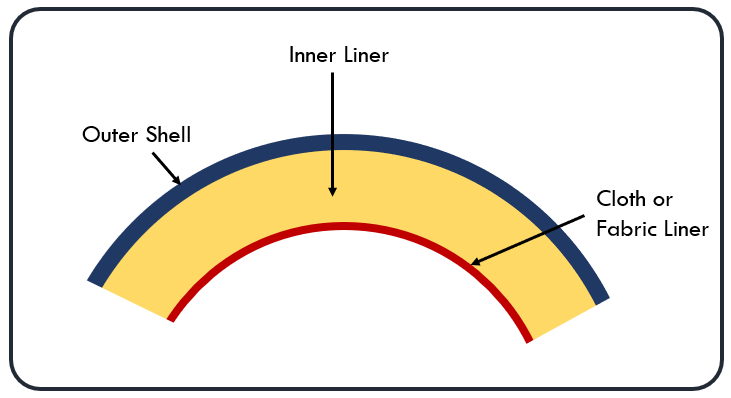
Apart from these 3 constituents, there is a retention system, face shield, and visor are present in a typical helmet.
Final words
As for when motorcycle helmets expire, most helmet manufacturers do not mention any expiry date on the helmets.
That doesn’t mean you should never replace your helmet.
Helmets do have a shelf life.
They face wear and tear, the cloth liner starts to smell (even if you wash periodically), and face technology obsolescence.
So as a general rule, you need to replace your helmet at least every 5 years.
Before you go…
Here are a few more helmet-related posts for you:
